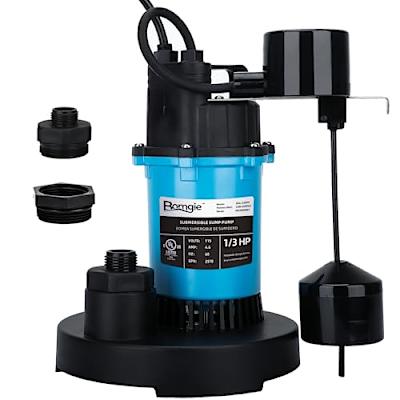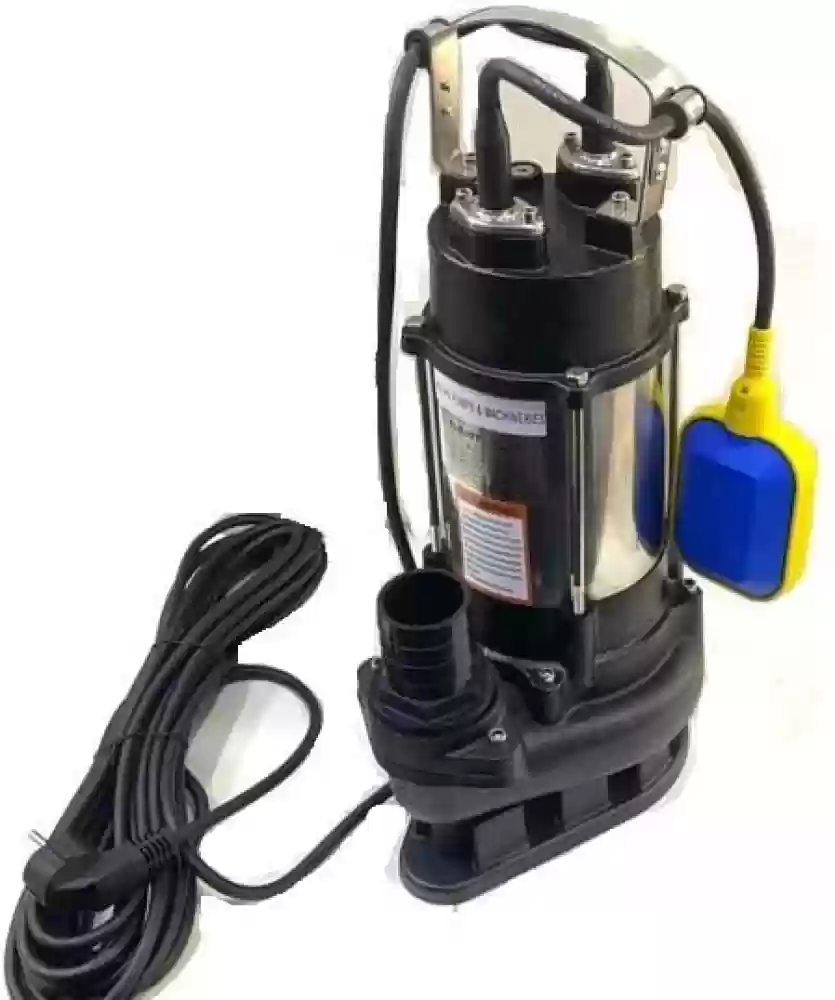Clear Instructions for Maintaining a Sump Pump
Clear Instructions for Maintaining a Sump Pump
Blog Article
Just how do you actually feel with regards to Steps to Cleaning Your Sump Pump Properly?

Sump pumps are essential elements in numerous homes, specifically in locations vulnerable to flooding or excessive wetness. They aid avoid water damages by efficiently removing excess water from cellars or crawl spaces. However, like any other device, sump pumps need regular maintenance to ensure they operate properly when needed the most. Cleansing your sump pump is an essential part of its maintenance, and understanding just how to do it effectively can save you from pricey repair services and potential catastrophes.
Intro
Maintaining a tidy sump pump is crucial for its proper performance and long life. Neglecting this essential task can lead to obstructions, malfunctions, and eventually, water damage to your residential property. As a result, finding out just how to clean a sump pump is critical for homeowners who count on these tools to keep their cellars dry and safeguarded.
Indications of a Dirty Sump Pump
Understanding when your sump pump requires cleansing is critical for preventing potential breakdowns. Some common indicators that indicate an unclean sump pump consist of strange noises throughout operation, reduced water circulation, and noticeable debris in the pit. If you notice any one of these signs, it's necessary to clean your sump pump immediately to prevent any type of additional issues.
Preparing for Cleansing
Prior to you begin cleaning your sump pump, it's important to take some safety precautions. Start by turning off the power to the pump to stay clear of any type of electrical accidents. Furthermore, put on proper protective equipment, such as gloves and safety glasses, to shield on your own from dirt, debris, and prospective pathogens.
Recognizing the Sump Pump
Prior to diving into the cleansing procedure, it's important to have a basic understanding of just how a sump pump functions. Typically set up in a pit or basin listed below the cellar flooring, a sump pump includes several essential components, consisting of a pump, a float switch, and a discharge pipe. When water gathers in the pit, the float switch activates the pump, which after that pumps the water out via the discharge pipeline, far from the structure's structure.
Step-by-step Overview to Cleaning a Sump Pump
Turning off the Power
Begin by detaching the power supply to the sump pump to stop any type of crashes while cleansing.
Checking for Appropriate Functioning
Prior to re-installing the pump, do a quick test to guarantee that the float button turns on the pump appropriately. Pour some water right into the sump pit and observe the pump's procedure. If whatever is operating appropriately, you can reconstruct the pump and reconnect the power supply.
Removing Particles and Dust
Make use of a bucket or a scoop to get rid of any kind of visible particles, dust, or sediment from the sump pit. Dispose of the debris correctly to prevent it from obstructing the pump or the discharge pipeline.
Cleaning the Pump and Drift Change
As soon as the pit is free from debris, carefully get rid of the pump from the pit. Evaluate the pump and the float button for any kind of indications of damages or wear. Make use of a soft brush or cloth to clean up the surfaces and get rid of any type of collected gunk.
Purging the System
After cleaning up the pump and float switch, purge the sump pit with tidy water to get rid of any type of staying dust or debris. This will assist guarantee that the pump operates smoothly and effectively.
Maintenance Tips to Maintain Your Sump Pump Clean
In addition to periodic cleansing, there are a number of upkeep ideas you can comply with to maintain your sump pump in optimum problem:
Final thought
Cleaning your sump pump is an essential aspect of its upkeep and ensures that it operates successfully when you require it the most. By complying with the steps laid out in this guide and including routine upkeep right into your routine, you can expand the life expectancy of your sump pump and safeguard your home from water damages.
6 STEPS ON HOW TO CLEAN A SUMP PUMP PROPERLY
UNDERSTANDING SUMP PUMPS
Your sump pump plays a crucial role in protecting your home by managing and removing excess water. It primarily functions as a “shield”, guarding your basement against the damaging effects of water accumulation. The pump is housed in a sump pit in the lowest part of your basement, and its job is to pump out any water that collects there.
During heavy rainfalls or when snow melts rapidly, water can infiltrate your basement, posing potential risks like flooding, structural damage, and harmful mold growth. Here, the sump pump springs into action, pumping out the intruding water and directing it away from your home.
SAFETY FIRST
Before cleaning, remember to prioritize safety. Disconnect the sump pump from the power source to prevent any accidental electric shocks. Also, wear sturdy gloves to protect your hands from any sharp or dirty components within the pump.
REMOVE THE SUMP PUMP
After ensuring your safety, the next step is to remove the sump pump from its pit. Doing this might require careful maneuvering as you don’t want to damage any pump components. Once removed, clean the sump pit to remove any accumulated debris or sludge.
INSPECT THE PUMP
Inspect the pump for any visible signs of wear or damage. Check the power cord, float switch, and impeller housing. If any components look worn out or damaged, consider replacing them to ensure optimal performance.
CLEAN THE PUMP
Thoroughly clean the pump with warm, soapy water. Make sure to rid it of any dirt, gravel, or other debris that might impede its performance. You can use a toothbrush to clean the small, hard-to-reach parts of the pump.
REINSTALL THE SUMP PUMP
Reinstall the pump into the sump pit Make sure it’s positioned correctly to remove the water effectively Once it’s back in place, reconnect it to the power source TEST THE PUMP
Finally, pour some water into the pit to ensure the pump works correctly. It should start automatically and begin pumping out the water; if it doesn’t, check the power source and the positioning of the pump.
Remember, while cleaning your sump pump is an essential part of home maintenance, hiring a professional plumber for a thorough inspection and cleaning at least once a year is also important. This will ensure that your pump is in optimal condition, ready to protect your home from potential water damage.
BEST PRACTICES FOR CLEANING SUMP PUMP DISCHARGE PIPES
Regular Inspection: Regularly inspect your discharge pipes, especially during heavy rainfall or snowmelt periods. Look for any signs of blockage or damage. Early detection of problems can prevent serious issues down the line. Periodic Cleaning: Over time, sediment and debris can accumulate in the discharge pipes, impeding the flow of water. Regular cleaning helps keep the pipes clear and functioning efficiently. You can use a high-pressure water jet to effectively clean the pipes. Insulation During Winter: In colder climates, discharge pipes can freeze, blocking the outflow of water. Protect your discharge pipes from freezing temperatures by insulating them with foam pipe insulation. This will ensure the sump pump can continue to discharge water even in freezing conditions. Proper Positioning: The discharge pipe should be positioned to direct water away from your home’s foundation. Improper positioning can lead to water seeping back into the basement. Ensure the pipe is long enough and angled correctly. Installation of a Check Valve: A check valve prevents water from flowing back into your sump pit after the pump has pushed it out. Installing a check valve helps maintain the efficiency of your sump pump and reduces the risk of flooding. Minimize Pipe Turns: Every curve or turn in the discharge pipe can decrease the efficiency of water flow. By minimizing turns and bends in your discharge pipe, you can increase the efficiency of your sump pump. https://www.fullspeedplumbing.com/how-to-clean-a-sump-pump-properly9999/

Do you enjoy more info about Steps to Cleaning Your Sump Pump Properly? Leave a remark directly below. We'd be delighted to hear your suggestions about this blog post. We hope that you visit us again later on. Appreciated our post? Please share it. Let others check it out. Thanks a lot for your time. Don't forget to check up our website back soon.
Book An Estimate Now Report this page